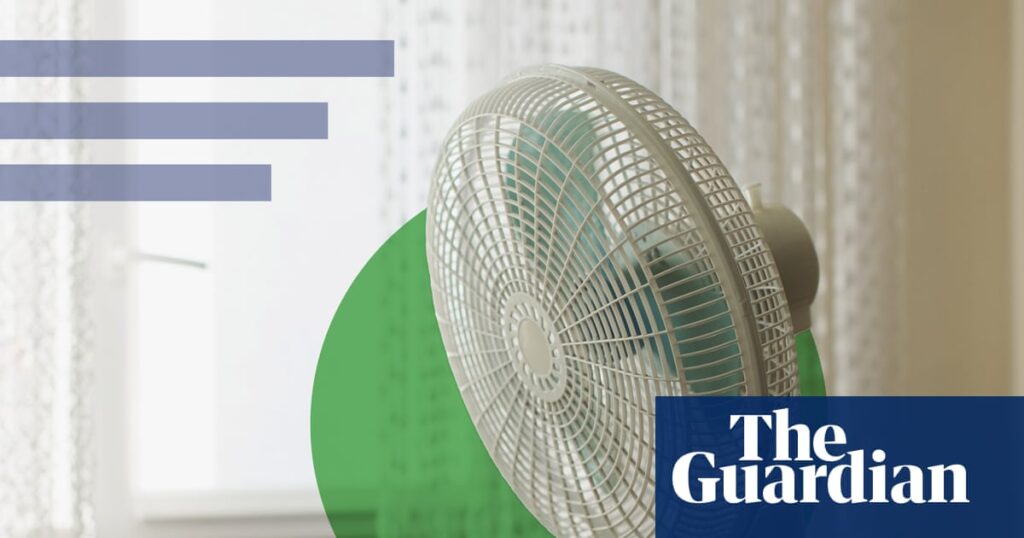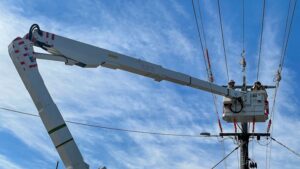
Living on the third floor of a 1920s art deco apartment in St Kilda, residents have long relied solely on ceiling fans, eschewing air conditioning. This tradition continues as a way to save energy and reduce power bills during the sweltering summer months. The practice of fan-first cooling—using electric fans primarily and reserving air conditioning for extreme heat—has been gaining traction not only in St Kilda but globally.
Fan-first cooling is a strategy that aligns with growing concerns over climate change and energy consumption. According to a recent report from the United Nations Environment Programme, sustainable cooling methods, including maximizing fan use, could cut emissions by 64% by 2050. This approach is not only environmentally friendly but also cost-effective, as electric fans use as little as 3% of the energy consumed by air conditioning units.
Keeping Cool as the Planet Heats Up
As global temperatures rise, so do the health risks associated with heat, particularly for vulnerable populations such as the elderly and young children. By 2019, heat-related deaths were estimated to have reached nearly 500,000 annually, a figure that continues to climb as climate impacts worsen.
In Australia, a study published in the Medical Journal of Australia found that fan-first cooling could reduce electricity demand and greenhouse gas emissions from air conditioning by more than 70% annually. However, there are limitations to relying solely on fans. When temperatures soar, fans can exacerbate heat strain as the body struggles to produce enough sweat to cool itself.
“A fan on high speed can make the perceived temperature 4C cooler,” says Jenny Edwards, director and scientist at Light House ArchiScience.
Edwards emphasizes that while ceiling fans can delay the need for air conditioning, they are not a complete substitute. “We love reverse cycle AC technology for those really intense and prolonged hot periods because it is super efficient,” she adds.
When to Switch on the Air-Con
Electric fans are generally effective up to 27C, but personal comfort levels and home conditions vary. Fans can be safely used with other cooling measures up to 37C, after which alternative strategies should be considered, such as sealing windows, using blinds, and, if necessary, turning to air conditioning or visiting air-conditioned public spaces.
Heat-related illnesses can be severe, with symptoms including excessive sweating, headaches, and dizziness. The University of Sydney’s HeatWatch provides forecasts and tips for managing heat health risks.
The ‘Great Forgetting’ of Fan-First Cooling
Despite its benefits, fan-first cooling is not widely adopted. Jenny Edwards attributes this to a “great forgetting” of simple cooling strategies and modern home designs that favor large, unshaded windows, making them prone to overheating. Additionally, air conditioning has become normalized in public spaces, and public health campaigns have not strongly advocated for fan-first cooling.
Tim Forcey, author of My Efficient Electric Home Handbook, supports the use of fans as a primary cooling method but acknowledges the essential role of air conditioners. “Don’t wait until the peak time of 5pm to turn on the air-con,” he advises, noting the federal government’s offer of free electricity during certain hours.
“Yes – use fans first to try to keep cool. But don’t be stingy with air-con usage if you need it – we still have 78-year-olds in Australia prematurely dying from heat morbidity,” Forcey warns.
As summer intensifies, the residents of St Kilda will continue to rely on their ceiling fans, staying hydrated and keeping blinds drawn to manage the heat. The fan-first approach offers a sustainable, cost-effective solution to rising temperatures, reminding us of the power of simple, time-tested methods in the face of climate challenges.





